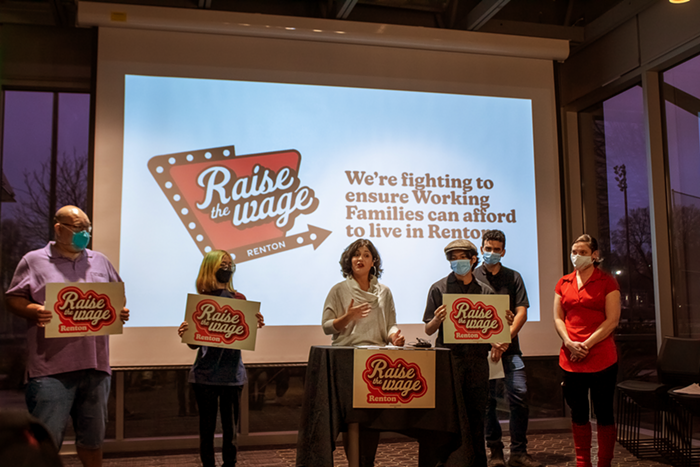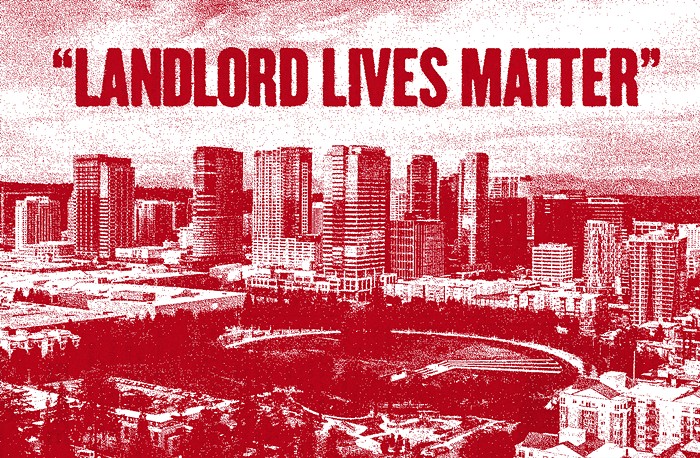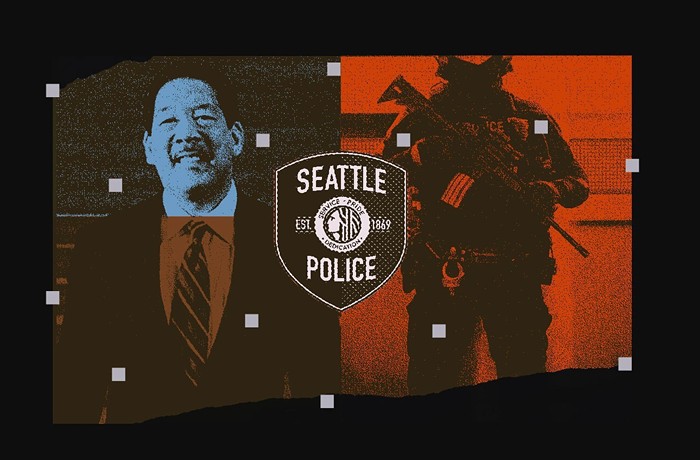
Over the coming year, the Seattle City Council will consider the city's broadest swath of upzones yet.
Interim Mayor Tim Burgess, Council Member Rob Johnson, and city staff unveiled a plan Thursday to increase density in at least 27 neighborhoods across the city, including most city land currently zoned for multifamily-use. The proposal would leave single family neighborhoods largely untouched, but would allow for denser housing in areas that already have apartments and commercial buildings. The city council will spend the next year considering the changes.
“While it’s true that many issues have contributed to the scarcity of affordable housing in our city, supply is absolutely one of the biggest factors,” Burgess said. “I️ don’t know anyone who disagrees with the desire to create more affordable housing in or city.”
The new proposal is the latest step in city hall's Housing Affordability and Livability Agenda (HALA). The council has already unanimously approved upzones in downtown, South Lake Union, the University District, a portion of the Central District near 23rd and Union, and the Chinatown-International District. In exchange for building taller buildings in those already upzoned areas, developers will be required to set aside between 2 and 11 percent of their housing units as affordable, depending on where the project is located. Developers can also pay fees in lieu of building the affordable housing. That money goes to the city's Office of Housing, which partners with low income housing developers. Under this proposal, developers would be required to set aside 5 to 11 percent of units as affordable or pay between $5 and $32.75 per square foot in fees. (Affordable here is defined as rental housing for people with 60 percent area median income or about $38,000 a year for an individual and $54,000 for a family of four. If the units are for sale, they only have to be affordable at the 80 percent median income threshold.)
Susan Boyd, CEO of the nonprofit housing developer Bellwether Housing, said affordable housing advocates have long called for these types of requirements on developers. “Today, we are closer to answering this call than we have ever been,” Boyd said.
“People just like those who live in our buildings but who have not been lucky enough to find one of our rare vacancies are being forced to choose between paying rent and paying for healthcare or for their kids’ education,” Boyd said. “They are being forced further and further from the jobs and opportunities in this city.”
The newest upzones would reach all neighborhoods already zoned for apartments and mixed-use buildings, including 27 neighborhoods across the city known as urban villages. Urban villages already allow some apartment buildings and commercial development. Twenty-seven urban villages, spanning from Ballard, Fremont, and Ravenna to Columbia City and Northgate, could see taller or larger buildings under the plan.
Ten of those urban villages will also see their boundaries expanded. That means things like apartment buildings will be allowed in a some areas that are currently single family zones. According to the mayor’s office, that will affect just 6 percent of the total land currently zoned for single family houses.
While 21,000 acres in Seattle are zoned for single family homes, just 7,000 acres are zoned for multifamily development like apartment buildings, according to the city's Office of Planning and Community Development.
You can use this map to see where the city proposes changes.
City officials say they considered displacement risk in deciding where to upzone and how much. While areas all over Seattle will see increased density, they say those with a high risk of displacement and low access to transit, parks, and other amenities will see the least dramatic increases.
HALA has a goal of creating 6,000 new units of rent restricted housing over the next decade. The already passed upzones are expected to create half that and these new upzones will create the other half, either through development on site or the in lieu of fees. While every upzone so far has passed unanimously, backlash to the program has come in several forms. Some oppose increased density; others argue the city's affordability requirements are too low to meaningfully meet the needs of a city facing a homelessness crisis.
Burgess defended the set-aside requirements today saying they strike “a balance between getting as much affordable housing as we can, but not discouraging or blocking development.”
Still others have argued against allowing developers to pay fees instead of building units on site because that could segregate market rate housing from affordable housing. While the mandatory housing affordability plan was initially sold as a way to integrate housing of different income levels, city officials have since adjusted their talking points. They now say the fees allow nonprofits to build even more housing than private developers would and that those projects are spread throughout the city.
City planners released an early draft of the proposed changes earlier this year. Since then, city departments have held meetings and telephone town halls, and canvassed in single family neighborhoods. The council will spend the next year debating the changes and hosting more public meetings. The council is not expected to actually vote on most of the changes until next summer or fall.
This post has been updated.


















